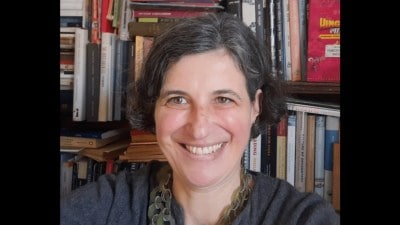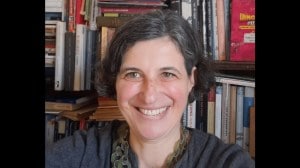Stamp Collection
With a new solo in Milan,Reena Saini-Kallat and her rubber-stamp installations are making a mark
With a new solo in Milan,Reena Saini-Kallat and her rubber-stamp installations are making a mark
For an artist whose schedule is humming with international shows and big projects,Reena Saini-Kallat is a picture of calm. She ushers us into her Bandra home,not a hair out of place and serene in a white salwar kameez. She has just returned from the printers where she was overseeing her first booka monograph to accompany her solo in Milans Marella Gallery (it opened on May 15). Her works are packed and on their way to Italy,her four-year-old son Ahaan is out playing and husband Jitish Kallat is holed up in his room listening to Billy Jean. Now she can sit back and talk about her work.
And theres quite a lot to talk about. One of her travelling exhibitions opened in Tokyo in April and is currently at the National Museum in Korea. It moves to to Vienna in June. Drift that showed in Mumbai and Chicago now moves to Milan with new works. I am so happy about this show,it happened through complete coincidence, says the 37-year-old artist. I was showing a work at a group show titled Words from the Womb,when the gallery owners from Marella approached me to have a solo with them. When we saw the space,I could not help but agree, she says.
Saini-Kallats works began as canvases in the 1990s inspired by mythology that is entwined with contemporary life. That was when she met Jitish at the J J school of Art (1993). They got married in 1999. Saini-Kallat has always been interested in the lives of the proletariat and politics of nations. She mainly does installations these days though all her ideas spring from the painted image.
For example,Synonym is a series on the thousands of people who go missing every year from cities,towns and villages of India. These people are either lost through natural calamities such as landslides,floods and earthquakes; or gone missing during riots. Once I got the idea for this work,I did extensive research. Then I realised that these could not remain as simple paintings,so I added layers to them, says Saini-Kallat. The portraits of the missing persons are like jigsaw puzzles made of numerous rubber stamps,inscribed with the names of the missing,in 14 languages. The works have been mounted on a grid that holds the whole puzzle together. It is only when the viewer steps back that the portraits reveal themselves through the matrix of stamps.
She repeats her leitmotif in Closet Quarries,another installation made of rubber stamps,which is part of the Milan solo and was inspired by the inlay patterns on the walls of the Taj Mahal and other Mughal architectural monuments. The rubber stamps carry names and symbols found engraved on the red sandstones laid along the back wall of the Taj Mahal and on the pathways leading to the Taj, she says.
She wanted to bring to light the anonymous architects who secretly engraved their names in obscure places around the monuments. Their names are now embedded in beautiful inlay work and designs that Saini-Kallat has created with the stampsanother jigsaw puzzle that reveals itself when one steps away from the work.
The installations involved working with craftsmen and government agencies like the Archaeological Survey of India or the police. Each work requires a different set of craftsmen,from carpenters to tailors,from the rubber stamp maker to the marble mould makers. It is very laborious but an interesting process,since for me the journey is as important as the final work, she says.
She will also be showing two large sculptural works made of marble powder mixed with resin and titled White Heat and White Yarn. The former is a large electric iron rendered useless by tridents,weapons and sharp tools sticking out of it. On the ironing board is an opulent garment embroidered with names of those who signed a peace petition between India and Pakistan in 2004. The other work is an equally large sewing machine where the cloth under the needle resembles a map,impaled with the same weapons and tools.
Despite the recession,serious collectors and museums have been consistently collecting her works. Given that my works are not small or dainty,but weigh nothing less than 150 kilos,I am glad there are spaces where they can finally rest, she says.
Finally we enquire,does she ever stop to take a holiday? I do working holidays. Ahaan,Jitish and I will have a couple of days in Florence after the Milan opening. After all,these are my best years and it would be unfair not to work I am yet to create my best piece.



- 01
- 02
- 03
- 04
- 05




























